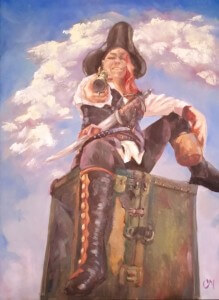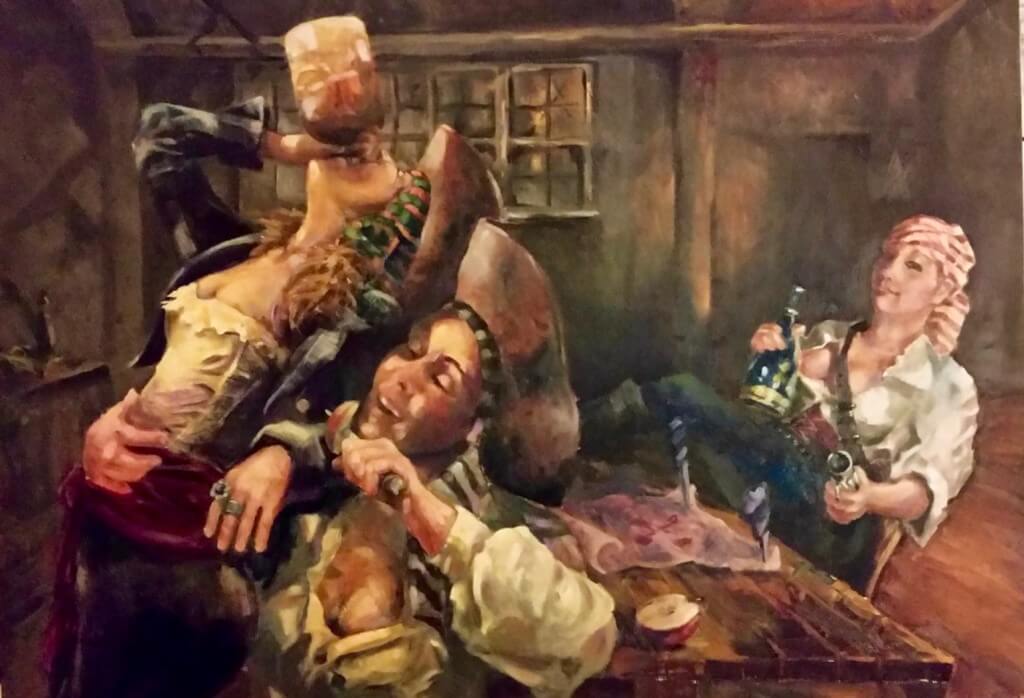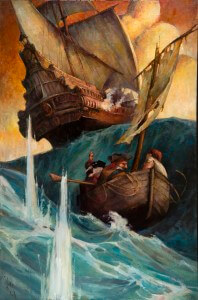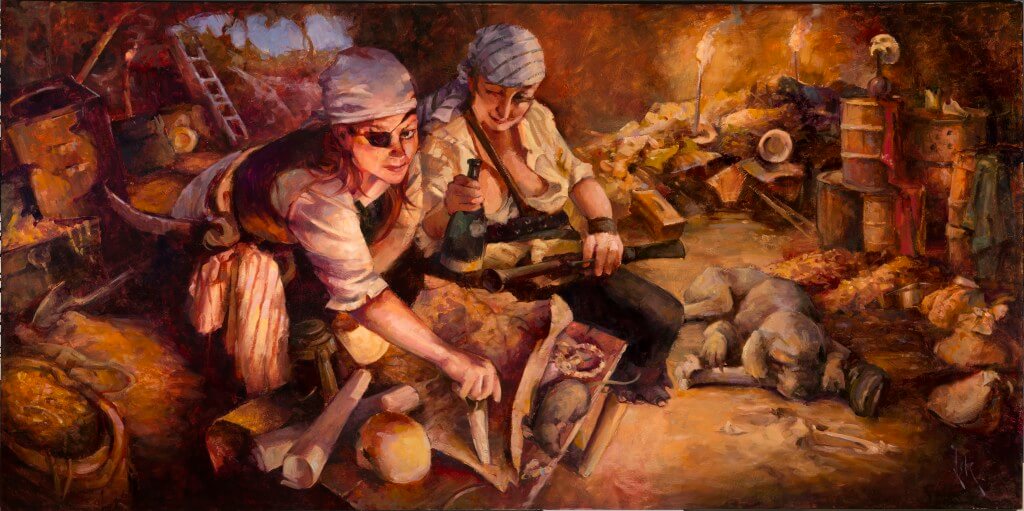It’s a Friday, and I’m meeting Phil Lear and Christian Medovich for coffee. We commandeer a circle of easy chairs around a fireplace to discuss their paintings that hang in the new downtown seafood joint Bonny and Read. (See pictures and more from RMFR here.)

Lear, whose works many will recognize from other downtown locales like the Mining Exchange and Bonny and Read owner Joe Campana’s other restaurant, The Rabbit Hole, supplied four pieces.
Medovich is another downtown fixture, largely through galleries Modbo and S.P.Q.R., and the Rendezvous Lounge, although he’s only painted for five or six years.
He and Lear are friends too, discussing fine art, getting into mischief, and collaborating on single works (see their downtown scenes at S.P.Q.R.’s Play Nice: The Conjoined Show). By day, the two use their talents to build and paint sets for the Colorado Springs Fine Arts Center Theater Company. They just finished their work for the Peter Pan prequel, Peter and the Starcatcher.
Pirates, needless to say, are on the brain. And they are more than happy about that. “You don’t get to do that very much,” Lear says. “It’s kind of a lost world for artists.”

Their work for Bonny and Read started last August, when Lear got a text from Campana. No instructions, just a quip: “New restaurant, need artwork.” There wasn’t much more direction after that. Lear had earned Campana’s trust, and Medovich was excited to jump in when invited. And just like that, Campana revitalized a tradition of narrative, collaborative artwork that both artists craved.
There’s less credence given to this type of narrative art these days, they say, a sentiment echoed by Brett Andrus of the Modbo in an interview last year. But creating the background for a story is very much alive.

Lear: “[This is a] great subject matter for narrative painters like us.” They revere the work of past illustrator artists like N.C. Wyeth and Howard Pyle, who basically invented the modern pirate. Pyle’s Book of Pirates, and Wyeth’s illustrations of Stevenson’s Treasure Island, with the big hats, swaggering clothes, headwraps and the like created the stereotype of pirates we know today, and see in places like Pirates of the Caribbean.
Medovich became a part of the project while helping Lear with a photoshoot for images for the Bonny and Read works. Not only did this result in a series of shared references and props — you’ll see recurring objects in the Bonny and Read sets like an apple, a jug — but it launched an entirely new creative direction for Medovich’s May Modbo show.
Yet again, the practice of sharing references speaks to the pair’s atavistic values, as was common back in the 1800s and early 1900s, Medovich says.
“These paintings have that spirit,” Lear says.
From coffee we walk to the establishment itself. Lunch is bustling, and the artists ponder a post-interview libation. They point out some theater in the place: Fellow local Douglas Rouse was employed to add faux brick and wood finishes.
That said, Bonny and Read is still a restaurant at the end of the day. Medovich points out there is a balance with the subject matter you must be aware of in a restaurant environment (no nudity, gore, political stuff), but that you can play into the “seedy” side of the pirate life. He points to one image of a pirate hold with a dog munching on a leg. (Yojimbo, anyone?)
“It’s fun to be a little Tarantino-esque,” Phil says.

To that end, the informally named Poseida-Anna, by Medovich. She’s the pirate/steampunk lady on the far wall holding a ship in a bottle. Look closely, inside, a Kraken threatens the ship while Poseida-Anna observes the mayhem calmly.

“She’s just having fun terrorizing the ship,” Lear says.
An earlier incarnation had her standing in front of a calendar, with tasks for the week that included typhoons and other catastrophes she planned to impassively sic upon the helpless crew in the bottle.
“Maybe like a niece of Poseidon.”
[Images: Edie Crawford; courtesy Phil Lear and Christian Medovich]





